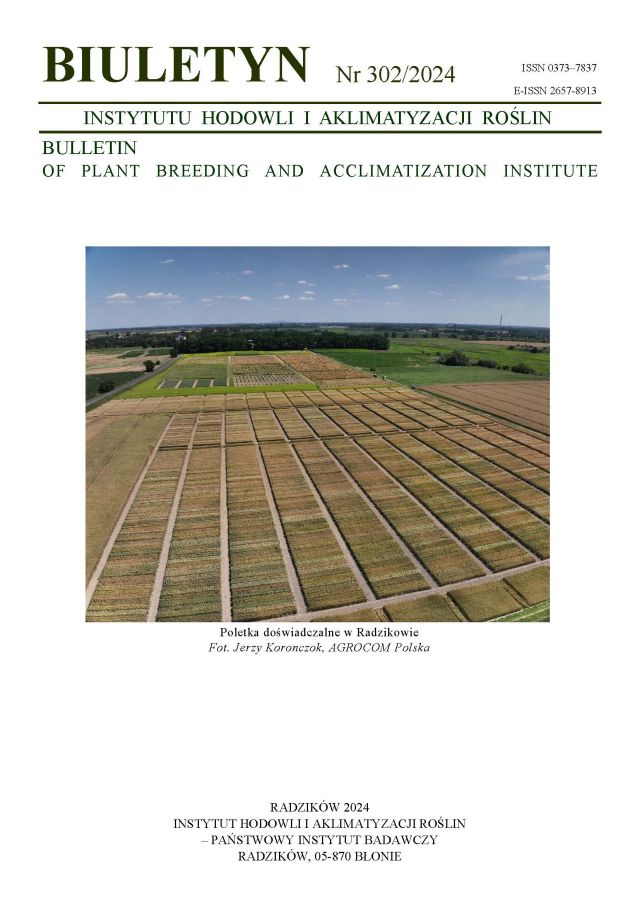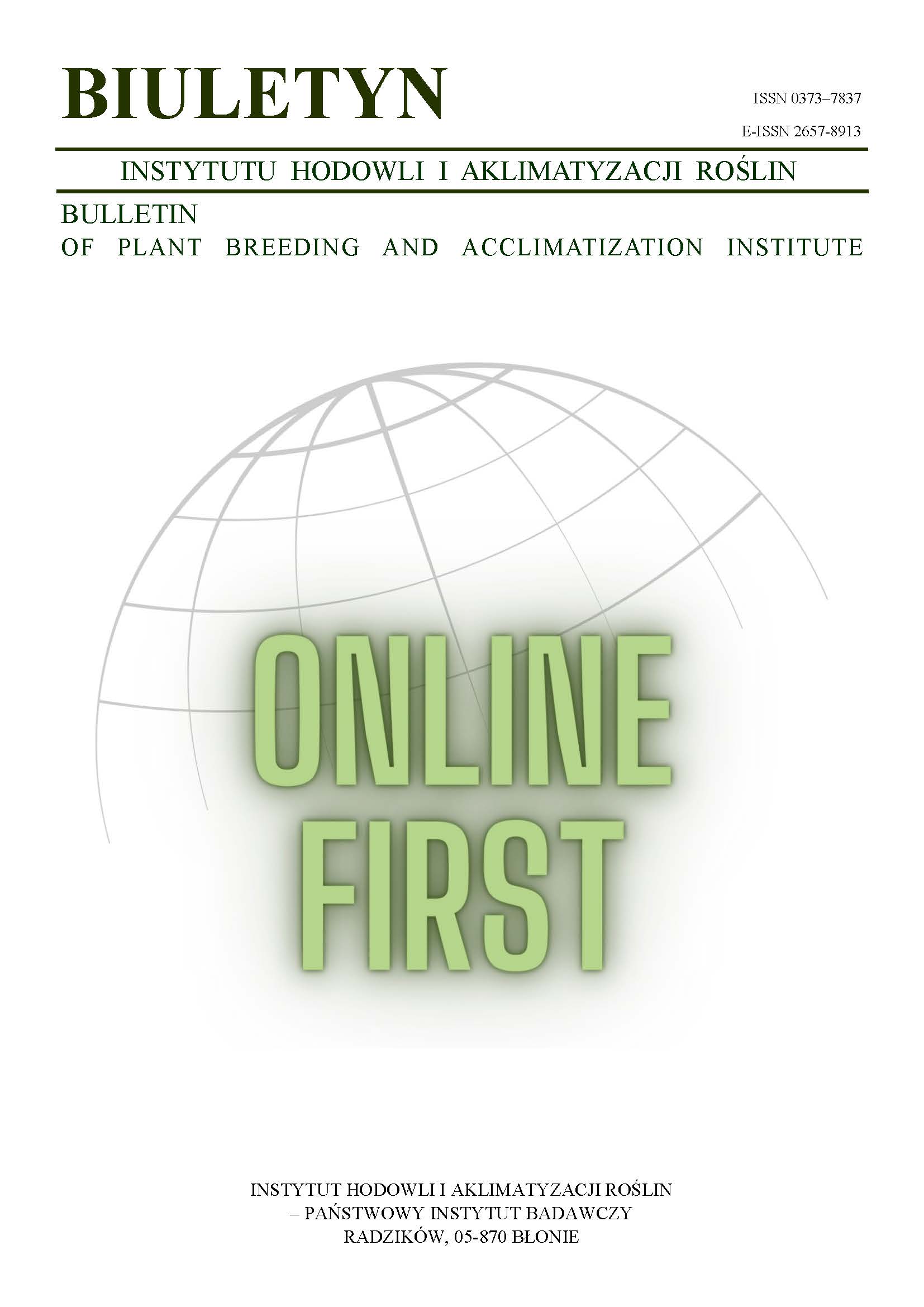Rośliny o działaniu adaptogennym
Grażyna Obidowska
grazyna_obidowska@sggw.plZespół Ekotoksykologii KGHiBR, Szkoła Główna Gospodarstwa Wiejskiego, Warszawa (Poland)
Ala Sadowska
Zespół Ekotoksykologii KGHiBR, Szkoła Główna Gospodarstwa Wiejskiego, Warszawa (Poland)
Abstrakt
Termin „adaptogen” został stworzony w 1947 roku przez naukowca radzieckiego N.V. Lazarewa. Nazwał on tak grupę substancji aktywnych farmakologicznie, które wywoływały w organizmie stan podwyższonej odporności niespecyficznej, pomagały w przystosowaniu się do zwiększonego wysiłku fizycznego, przeciwdziałały stresowi. Obecnie za kryterium przynależności do adaptogenów przyjmuje następujące właściwości biologiczne leku: działanie immunostymulujące, obniżanie aktywności ośrodkowego układu nerwowego, a więc działanie uspokajające, poprawę funkcji mózgowych — umiejętności uczenia się i zapamiętywania, podwyższanie sprawności fizycznej organizmu w sytuacji obciążenia wysiłkiem, a także właściwości przeciwutleniające. Według niektórych autorów należy ponadto dodać: działanie antyhepatotoksyczne, przeciwnowotworowe oraz obniżanie poziomu cholesterolu i cukru we krwi. Niektóre właściwości surowców adaptogennych (antyhepatotoksyczne, przeciwutleniające, immunostymulujące) nabierają coraz większego znaczenia przy obecnym stanie zanieczyszczenia środowiska. Nagromadzanie się toksyn, zwłaszcza w komórkach wątroby, wiedzie do powstawania szeregu chorób, czemu mogą zapobiegać kuracje odtruwająco-wzmacniające, utrzymujące organizm w dobrej kondycji pomimo szeroko pojętej presji ze strony otoczenia. W opracowaniu tym zebrano ostatnie doniesienia literaturowe dotyczące uznanych roślin adaptogennych i ich aktywności biologicznej.
Słowa kluczowe:
Adaptogen, Eleutherococcus, Panax, Rhaponticum, Rhodiola, Schisandra, WithaniaBibliografia
Awang D. V. C. 1999. Immune Stimulants and Antiviral Botanicals: Echinacea and Ginseng. In: Perspectives on new crops and new uses. ASHS Press, Alexandria, VA: 450 — 456.
Google Scholar
Azizov A. P., Seifulla R. D., Chubarova A. V. 1997. Effects of Leuzea tincture and leveton on humoral immunity of athleths. Eksp. Klin. Farmakol. 60 (6): 47 — 48.
Google Scholar
Azizov A. P., Seifulla R. D. 1998. The effect of elton, leveton, fitoton and adapton on the work capacity of experimental animals. Eksp. Klin. Farmakol. 61: 61 — 63.
Google Scholar
Bhattacharya S. K., Goel R. K., Kaur R., Ghosal S. 1987. Anti-stress activity of sitoindosides VII and VIII, new acylsteryl glucosides from Withania somnifera. Phytotherap. Res., 1 (1): 32 — 37.
DOI: https://doi.org/10.1002/ptr.2650010108
Google Scholar
Bhattacharya S. K., Kumar A., Ghosal S. 1995. Effects of glycowithanolides from Withania somnifera on an animal model of Alzheimer’s disease and perturbedcentralcholinergic markers of cognition in rats. Phytotherap. Res., 9 (2): 110 — 113.
DOI: https://doi.org/10.1002/ptr.2650090206
Google Scholar
Bhattacharya A., Ramanathan M., Ghosal S., Bhattacharya S. K. 2000 a. Effect of Withania somnifera glycowithanolides on iron-induced hepatotoxicity in rats. Phytotherap. Res., 14 (7): 568 — 570.
DOI: https://doi.org/10.1002/1099-1573(200011)14:7<568::AID-PTR663>3.0.CO;2-Q
Google Scholar
Bhattacharya S. K., Bhattacharya A., Sairam K., Ghosal S. 2000 b. Anxiolytic-antidepressant activity of Withania somnifera glycowithanolides: an experimental study. Phytomed., 7 (6): 463 — 469.
DOI: https://doi.org/10.1016/S0944-7113(00)80030-6
Google Scholar
Bhattacharya A., Ghosal S., Bhattacharya S. K. 2001. Anti-oxidant effect of Withania somnifera glycowithanolides in chronic footshock stress-induced perturbations of oxidative free radical scavenging enzymes and lipid peroxidation in rat frontal cortex and striatum. J. Ethnopharmacol. 74 (1): 1 — 6.
DOI: https://doi.org/10.1016/S0378-8741(00)00309-3
Google Scholar
Davydov M., Krikorian A. D. 2000. Eleutherococcus senticosus (Rupr.& Maxim.) Maxim. (Araliaceae) as an adaptogen: a closer look. J. Ethnopharmacol., 72 (3): 345 — 393.
DOI: https://doi.org/10.1016/S0378-8741(00)00181-1
Google Scholar
Deyama T., Nishibe S., Nakazawa Y. 2001. Constituents and pharmacological effects of Eucommia and Siberian ginseng. Acta Pharmacol. Sin. 22 (12): 1057 — 1070.
Google Scholar
Duke J.A., Ayensu E.S. 1985. Medicinal Plants of China. Reference Publications, Inc., Algonac, USA.
Google Scholar
Ellis J. M., Reddy P. 2002. Effects of Panax ginseng on quality of life. Ann. Pharmacother. 36 (3): 375 — 379.
DOI: https://doi.org/10.1345/aph.1A245
Google Scholar
Furmanowa M., Gajdzis-Kuls D., Ruszkowska J., Czarnocki Z., Obidoska G., Sadowska A., Rani R., Upadhyay S. N. 2000. In vitro propagation of Withania somnifera and isolation of withanolides with immunosuppressive activity. Planta Medica 66: 1 — 4.
Google Scholar
Ghosal S., Lal J., Srivastava R. S., Bhattacharya S. K., Upadhyay S. N., Jaiswal A. K. 1989. Immunomodulatory and CNS effects of sitoindosides IX and X, two new glycowithanolides from Withania somnifera. Phytotherap. Res., 3 (3): 201 — 206.
DOI: https://doi.org/10.1002/ptr.2650030510
Google Scholar
Ibatov A. N. 1995. The use of a decoction of the rhizome of Leuzea carthamoides for the treatment of alcoholics with depressive states. Zh. Nevropatol. Psikhiatr. Im. S.S. Korsakova, 95 (4): 78 — 79.
Google Scholar
Ip S. P., Yiu H. Y., Ko K. M. 2000. Differential effect of schisandrin B and dimethyl diphenyl bicarboxylate (DDB) on hepatic mitochondrial glutathione redox status in carbon tetrachloride intoxicated mice. Mol. Cell Biochem. 205(1/2): 111 — 114.
Google Scholar
Kelly G. S. 2001. Rhodiola rosea: a possible plant adaptogen. Altern. Med. Rev. 6 (3): 293 — 302.
Google Scholar
Kennedy D. O., Scholey A. B., Wesnes K. A. 2001. Differential, dose dependent changes in cognitive performance following acute administration of a Ginkgo biloba/Panax ginseng combination to healthy young volunteers. Nutr. Neurosci., 4 (5): 399 — 412.
DOI: https://doi.org/10.1080/1028415X.2001.11747376
Google Scholar
Kim W., Hwang S., Lee H., Song H., Kim S. 1999. Panax ginseng protects the testis against 2,3,7,8-tetrachlorodibenzo-p-dioxin induced testicular damage in guinea pigs. BJU Int., 83 (7): 842 — 849.
DOI: https://doi.org/10.1046/j.1464-410x.1999.00046.x
Google Scholar
Kim S. H., Son C. H., Nah S. Y., Jo S. K., Jang J. S., Shin D. H. 2001. Modification of radiation response in mice by Panax ginseng and diethyldithiocarbamate. In vivo, 15 (5): 407 — 411.
Google Scholar
Ko K. M., Mak D. H. F., Li P. C., Poon M. K. T., Ip S. P. 1996. Protective effect of a lignan-enriched extract of Fructus schisandrae on physical exercise induced muscle damage in rats. Phytother. Res., 10(5): 450 — 452.
DOI: https://doi.org/10.1002/(SICI)1099-1573(199608)10:5<450::AID-PTR872>3.0.CO;2-P
Google Scholar
Kuzmenko A. I., Morozova R. P., Nikolenko I. A., Korniets G. V., Kholodova Y. D. 1997. Effect of vitamin D3 and ecdysterone on free-radical lipid peroxidation. Biochem. (Mosc.), 62 (6): 609 — 612.
Google Scholar
Kuzmenko A. I., Morozova R. P., Nikolenko I. A., Donchenko G. V. 1999. Characteristics of antioxidant properties of 20-hydroxyecdysone in low density lipoproteins by kinetic parameters of chemiluminescence. Ukr. Biokhim. Zh., 71(6): 37 — 42.
Google Scholar
Lamer-Zarawska E. 1994. Rośliny adaptogenne i regulatory układu odpornościowego. Wiad. Ziel. 11: 4 — 7.
Google Scholar
Lutomski J., Kędzia B. 2000. Ocena aktywności biologicznej roślin o działaniu adaptogennym. Postępy Fitoterapii, 1(2): 31 — 35.
Google Scholar
Lutomski J. 2000. Ziołolecznictwo chorób wieku podeszłego. Postępy Fitoterapii, 1 (3): 24 — 32.
Google Scholar
Maslova L. V., Kondratev B. I., Maslov L. N., Lishmanov I. B. 1994. The cardioprotective and antiadrenergic activity of an extract of Rhodiola rosea in stress. Eksp. Klin. Farmakol. 57 (6): 61 — 63.
Google Scholar
Matsuda H., Murakami T., Kishi A., Yoshikawa M. 2001. Structures of withanosides I, II, III, IV, V, VI and VII, new withanolide glycosides, from roots of Indian Withania somnifera Dunal and inhibitory activity for tachyphylaxis to clonidine in isolated guinea-pig ileum. Bioorg. Med. Chem. 9 (6): 1499 — 1507.
DOI: https://doi.org/10.1016/S0968-0896(01)00024-4
Google Scholar
Minkova M., Pantev T. 1987. Effect of Eleutherococcus extract on the radioprotective action of adeturone. Acta Physiol. Pharmacol. Bulg. 13 (4): 66 — 70.
Google Scholar
Niedworok J., Jankowska B. 1997. Leuzea krokoszowata — właściwości farmakologiczne. Wiad. Ziel., 10: 8.
Google Scholar
Nishiyama N., Wang Y. L., Saito H. 1995. Beneficial effects of S-113m, a novel herbal prescription, on learning impairment model in mice. Biol. Pharm. Bull. 18 (11): 1498 — 1503.
DOI: https://doi.org/10.1248/bpb.18.1498
Google Scholar
Nitta H., Matsumoto K., Shimizu M., Ni X. H., Watanabe H. 1995. Panax ginseng extract improves the scopolamine-induced disruption of 8-arm radial maze performance in rats. Biol. Pharmacol. Bull., 18 (10): 1439 — 1442.
DOI: https://doi.org/10.1248/bpb.18.1439
Google Scholar
Obidoska G., Sadowska A., Rumowska M. 1998. Generative propagation of Withania somnifera (L.). Herba Pol., XLIV (4): 258 — 263.
Google Scholar
Obidoska G., Sadowska A., Rumowska M. 1999. Withania somnifera — indyjska roślina lecznicza, próby uprawy w Polsce. Zesz. Probl. Post. Nauk Rol., 468: 395 — 403.
Google Scholar
Obidoska G. 2001. Wpływ czynników agrotechnicznych na plon surowca i nasion Withania somnifera (L.) Dun. uprawianej w warunkach glebowo-klimatycznych Polski. Pr. Doktor. SGGW, Warszawa.
Google Scholar
Ohsugi M., Fan W., Hase K., Xiong Q., Tezuka Y., Komatsu K., Namba T., Saitoh T., Tazawa K., Kadota S. 1999. Active-oxygen scavenging activity of traditional nourishing-tonic herbal medicines and active constituents of Rhodiola sacra. J. Ethnopharmacol., 67 (1): 111 — 119.
DOI: https://doi.org/10.1016/S0378-8741(98)00245-1
Google Scholar
Opletal L., Krenkova M., Havlickova P. 2001 a. Phytotherapeutic aspects of diseases of the circulatory system. 7. Schisandra chinensis (Turcz.) Baill.: its composition and biological activity. Ceska Slov. Farm. 50(4): 173 — 180.
Google Scholar
Opletal L., Krenkova M., Havlickova P. 2001 b. Phytotherapeutic aspects of diseases of the circulatory system. 8. Chinese magnolia (Schisandra chinensis (Turcz.) Baill.): production of the drugs and their evaluation, therapeutic and dietary preparations. Ceska Slov. Farm. 50 (5): 219 — 224.
Google Scholar
Pan S. Y., Han Y. F., Carlier P. R., Pang Y. P., Mak D. H., Lam B. Y., Ko K. M. 2002. Schisandrin B protects against tacrine- and bis (7)-tacrine-induced hepatotoxity and enhances cognitive function in mice. Planta Med. 68 (3): 217 — 220.
DOI: https://doi.org/10.1055/s-2002-23145
Google Scholar
Russo A., Izzo A. A., Cardile V., Borrelli F., Vanella A. 2001. Indian medicinal plants as antiradicals and DNA cleavage protectors. Phytomed. 8 (2): 125 — 132.
DOI: https://doi.org/10.1078/0944-7113-00021
Google Scholar
Sadowska A., Racka M., Krzemińska Z. 1989. Przeciwnowotworowe substancje pochodzenia naturalnego. Wyd. SGGW-AR, Warszawa.
Google Scholar
Sadowska A. 1991. Rośliny i roślinne substancje przeciwnowotworowe. PWN, Warszawa.
Google Scholar
Sadowska A., Obidoska G., Rumowska M. 2000. Ekotoksykologia. Toksyczne czynniki środowiskowe i metody ich wykrywania. Wyd. SGGW, Warszawa.
Google Scholar
Shin H. R., Kim J. Y., Yun T. K., Morgan G., Vainio H. 2000. The cancer-preventive potential of Panax ginseng: a review of human and experimental evidence. Cancer Causes Control, 11 (6): 565 — 576.
DOI: https://doi.org/10.1023/A:1008980200583
Google Scholar
Shibata S. 2001. Chemistry and cancer preventing activities of ginseng saponins and some related triterpenoid compounds. J. Korean Med. Sci. 16 (Suppl.): 28 — 37.
DOI: https://doi.org/10.3346/jkms.2001.16.S.S28
Google Scholar
Spasov A. A., Wikman G. K., Mandrikov V. B., Mironova I. A., Neumoin V. V. 2000. A double-blind, placebo-controlled pilot study of the stimulating and adaptogenic effect of Rhodiola rosea SHR-5 extract on the fatigue of students caused by stress during an examination period with a repeated low-dose regimen. Phytomedicine, 7 (2): 85 — 89.
DOI: https://doi.org/10.1016/S0944-7113(00)80078-1
Google Scholar
Strzelecka H., Kowalski J. 2000. Encyklopedia zielarstwa i ziołolecznictwa. PWN, Warszawa.
Google Scholar
Szolomicki J., Samochowiec L., Wójcicki J., Droździk M. 2000. The influence of active components of Eleutherococcus senticosus on cellular defence and physical fitness in man. Phytother. Res. 14 (1): 30 — 35.
DOI: https://doi.org/10.1002/(SICI)1099-1573(200002)14:1<30::AID-PTR543>3.3.CO;2-M
Google Scholar
Trilis-Ya G., Davydov V. V. 1995. New data on mechanisms of adaptogenic activity of preparations from tissue culture of Panax ginseng C.A. Mey. And Polyscias filicifolia Bailey (Araliaceae). Rastiteln. Resursy, 31 (3): 19 — 36.
Google Scholar
Udintsev S. N., Krylova S. G., Fomina T. I. 1992. The enhancement of the efficacy of adriamycin by using hepatoprotectors of plant origin in metastases of Ehrlich’s adenocarcinoma to the liver in mice. Vopr. Onkol. 38: 1217 — 1222.
Google Scholar
Varga A. E., Szendrei K., Hajdu Z. S. 1985. Investigation of the adaptogenous Leuzeae radix and preparations produced of. Herba Hung., 24 (2/3): 165 — 176.
Google Scholar
Wagner H., Norr H., Winterhoff H. 1994. Plant Adaptogens. Phytomed., 1 (1): 63 — 76.
DOI: https://doi.org/10.1016/S0944-7113(11)80025-5
Google Scholar
Zhu M., Lin K. F., Yeung R. Y., Li R. C. 1999. Evaluation of the protective effects of Schisandra chinensis on Phase I drug metabolism using a CCl4 intoxication model. J. Ethnopharmacol., 67 (1): 61 — 68.
DOI: https://doi.org/10.1016/S0378-8741(98)00210-4
Google Scholar
Autorzy
Grażyna Obidowskagrazyna_obidowska@sggw.pl
Zespół Ekotoksykologii KGHiBR, Szkoła Główna Gospodarstwa Wiejskiego, Warszawa Poland
Autorzy
Ala SadowskaZespół Ekotoksykologii KGHiBR, Szkoła Główna Gospodarstwa Wiejskiego, Warszawa Poland
Statystyki
Abstract views: 100PDF downloads: 63
Licencja
Prawa autorskie (c) 2004 Grażyna Obidowska, Ala Sadowska

Utwór dostępny jest na licencji Creative Commons Uznanie autorstwa – Na tych samych warunkach 4.0 Miedzynarodowe.
Z chwilą przekazania artykułu, Autorzy udzielają Wydawcy niewyłącznej i nieodpłatnej licencji na korzystanie z artykułu przez czas nieokreślony na terytorium całego świata na następujących polach eksploatacji:
- Wytwarzanie i zwielokrotnianie określoną techniką egzemplarzy artykułu, w tym techniką drukarską oraz techniką cyfrową.
- Wprowadzanie do obrotu, użyczenie lub najem oryginału albo egzemplarzy artykułu.
- Publiczne wykonanie, wystawienie, wyświetlenie, odtworzenie oraz nadawanie i reemitowanie, a także publiczne udostępnianie artykułu w taki sposób, aby każdy mógł mieć do niego dostęp w miejscu i w czasie przez siebie wybranym.
- Włączenie artykułu w skład utworu zbiorowego.
- Wprowadzanie artykułu w postaci elektronicznej na platformy elektroniczne lub inne wprowadzanie artykułu w postaci elektronicznej do Internetu, lub innej sieci.
- Rozpowszechnianie artykułu w postaci elektronicznej w internecie lub innej sieci, w pracy zbiorowej jak również samodzielnie.
- Udostępnianie artykułu w wersji elektronicznej w taki sposób, by każdy mógł mieć do niego dostęp w miejscu i czasie przez siebie wybranym, w szczególności za pośrednictwem Internetu.
Autorzy poprzez przesłanie wniosku o publikację:
- Wyrażają zgodę na publikację artykułu w czasopiśmie,
- Wyrażają zgodę na nadanie publikacji DOI (Digital Object Identifier),
- Zobowiązują się do przestrzegania kodeksu etycznego wydawnictwa zgodnego z wytycznymi Komitetu do spraw Etyki Publikacyjnej COPE (ang. Committee on Publication Ethics), (http://ihar.edu.pl/biblioteka_i_wydawnictwa.php),
- Wyrażają zgodę na udostępniane artykułu w formie elektronicznej na mocy licencji CC BY-SA 4.0, w otwartym dostępie (open access),
- Wyrażają zgodę na wysyłanie metadanych artykułu do komercyjnych i niekomercyjnych baz danych indeksujących czasopisma.
Inne teksty tego samego autora
- Grażyna Obidowska, Ala Sadowska, Próby uprawy polowej Withania somnifera (L.) Dun. oraz ocena plonu i wartości surowca krajowego , Biuletyn Instytutu Hodowli i Aklimatyzacji Roślin: Nr 233 (2004): Wydanie regularne
- Grażyna Obidowska, Ala Sadowska, Wpływ pH podłoża i jego zasobności w azot na plonowanie Withania somnifera (L.) Dun. , Biuletyn Instytutu Hodowli i Aklimatyzacji Roślin: Nr 228 (2003): Wydanie regularne














